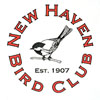Rain on Saturday, February 27th prompted us to postpone our trip to the Rhode Island Coast to the following day. That turned out to be a good decision. Sunday, the 28th was a calm and cloudy day that made for good birding and sea-watching. We met at Beavertail State Park in Jamestown at 8:30 am. The first birds we saw were Harlequin Ducks, close to shore, riding the waves with aplomb. Other birds close to shore included Common Eider and Black Scoter. A little further out, we saw Red-necked and Horned Grebes, Great Cormorants, Common and Red-throated Loon, and several other sea duck species. A large seal swam close to the point, sending a small group of Harlequin Ducks into the air. As we were getting ready to leave the park, a flock of Red Crossbills flew over the parking lot. Our second stop was at Scarborough Beach in Narragansett. We saw two Black-headed Gulls there. They were roosting on the rocks by the sea. Then, one of them flew past us over the shore. There was a flock of Sanderlings feeding on the beach and more sea ducks in the water by the jetty, including Common Goldeneye, Bufflehead, Greater Scaup, and White-winged Scoter. We went next to Cards Pond and Moonstone Beach Roads in South Kingstown. We saw a large flock of Eastern Meadowlarks in a field there and four Snow Geese made a dramatic entrance as they flew in to join a large flock of Canada Geese we were watching. After a brief stop at the entrance area to Trustom Pond Wildlife Refuge (where we saw a Red-breasted Nuthatch visit a feeder), we went to the nearby Perry’s Mill Pond. There we saw American Wigeon, Hooded Mergansers, and Gadwall. It was early afternoon then and our next stop was the Grassy Point area in the Ninigret National Wildlife Refuge. For the past 15 years, we have been delighted to see what we presume to be the same individual adult Lesser Black-backed Gull at this location. Often it is perched on a particular rock close to shore. We were concerned that it wouldn’t be here this year, but we arrived and looked out at its favorite perch, and there it was. It was soon displaced by a Great Black-backed Gull, making for a nice direct comparison between the two species. Our next stop was a change of pace: instead of looking for waterbirds, we hiked into the Burlingame Campgrounds Area in search of a Red-headed Woodpecker that was known to be wintering there. It took us awhile to find the campsite where it was often seen but, once there, it didn’t take us long to find the bird. Later, it was joined by a Yellow-bellied Sapsucker. We kept to tradition and made the Weekapaug Breachway our last stop of the day. What makes this site special is the fact that the birds in the canal there are close and easily visible, affording excellent views of these species. A Horned Grebe was only a few feet from us when we got out of our cars. Also close by were Common Loons, Common Eider, and Brant. We ended our excursion with about 60 species seen on the day. All of us were pleased with the wide variety and beauty of the birds that we saw as well as the scenic nature of the sites we visited. We are already looking forward to next year’s trip to our neighboring state.
Chris Loscalzo
March 1, 2021
